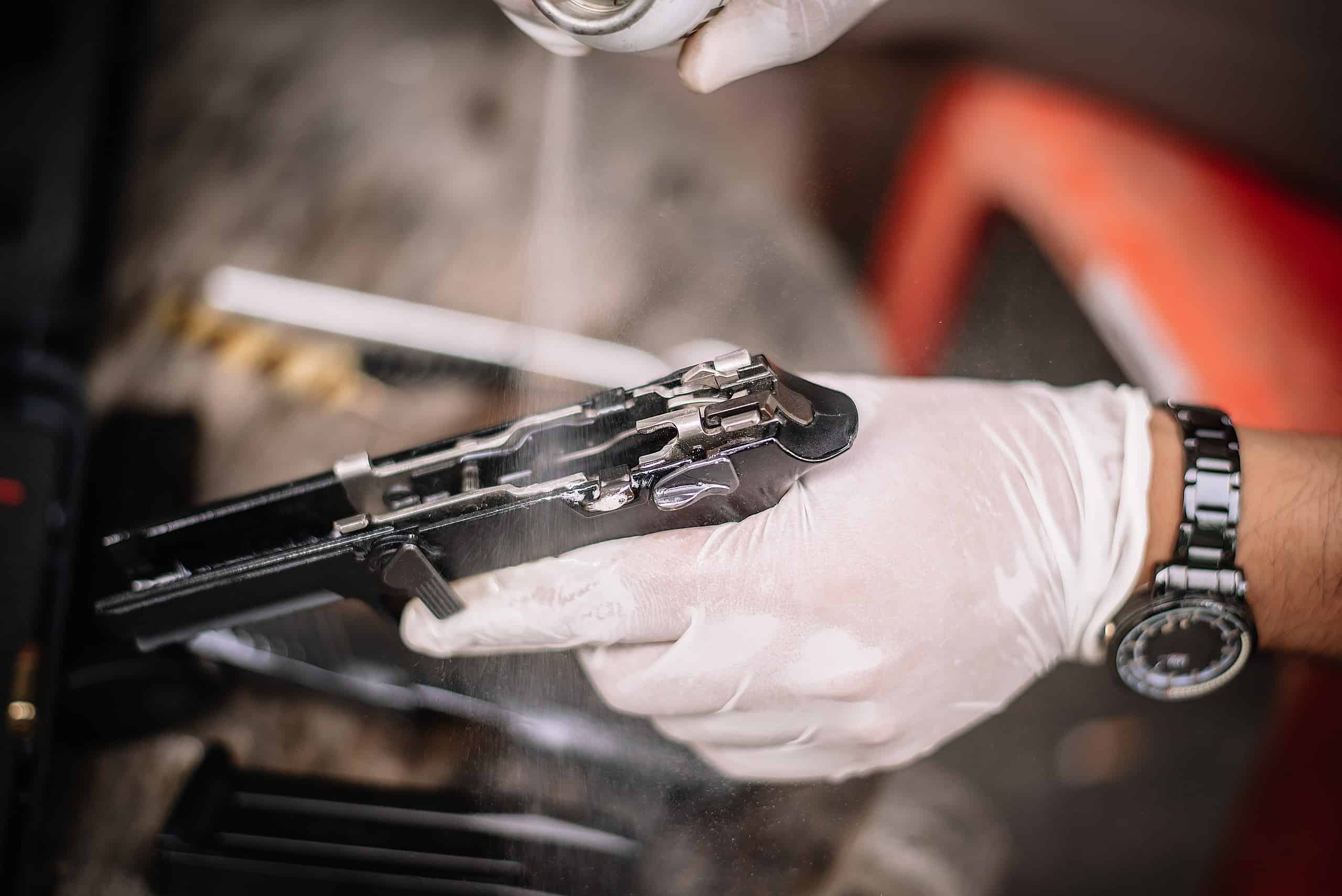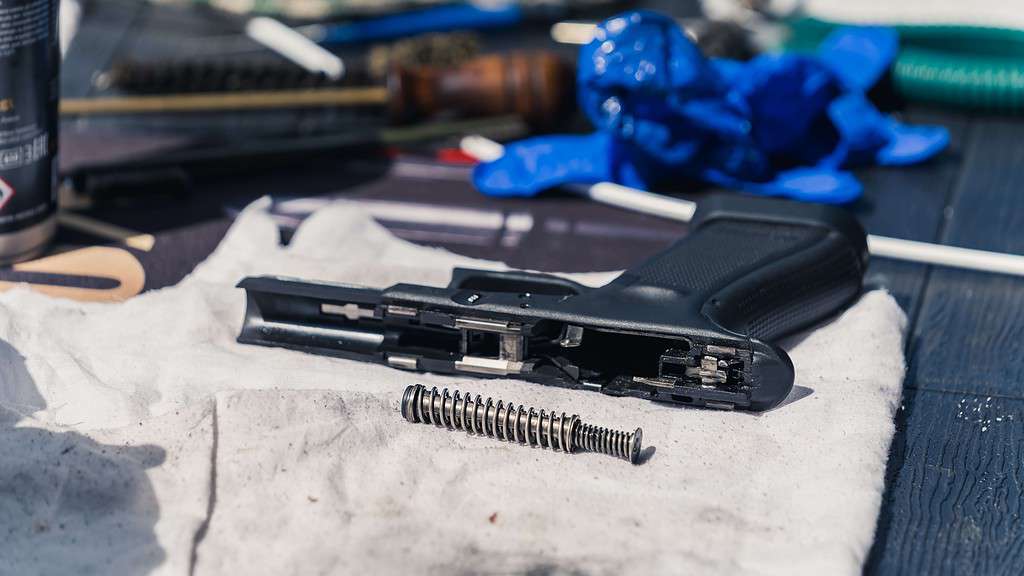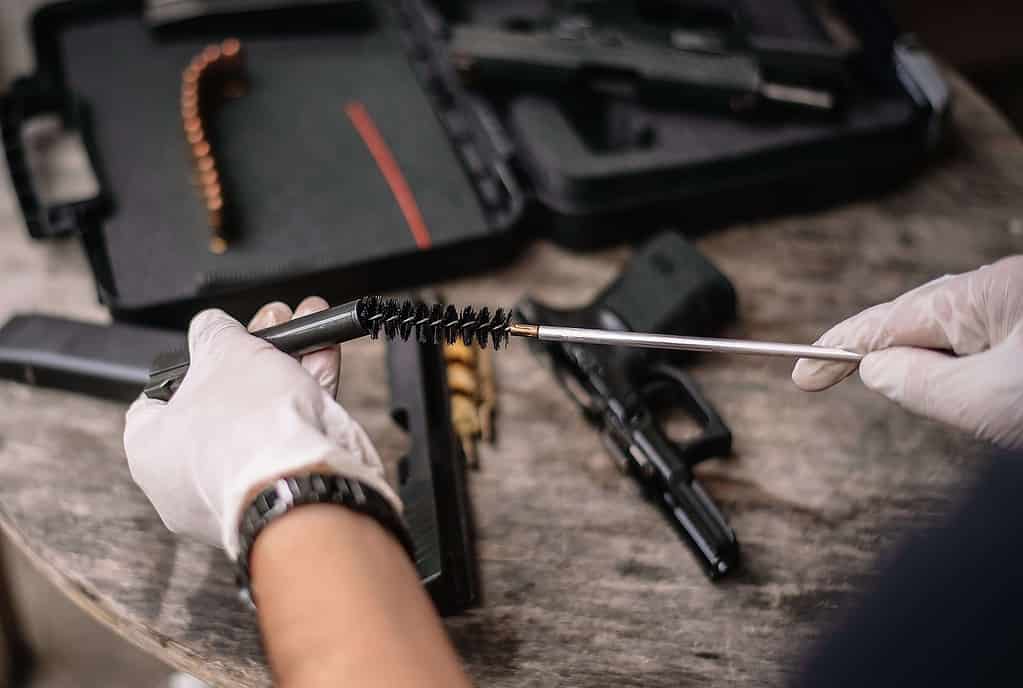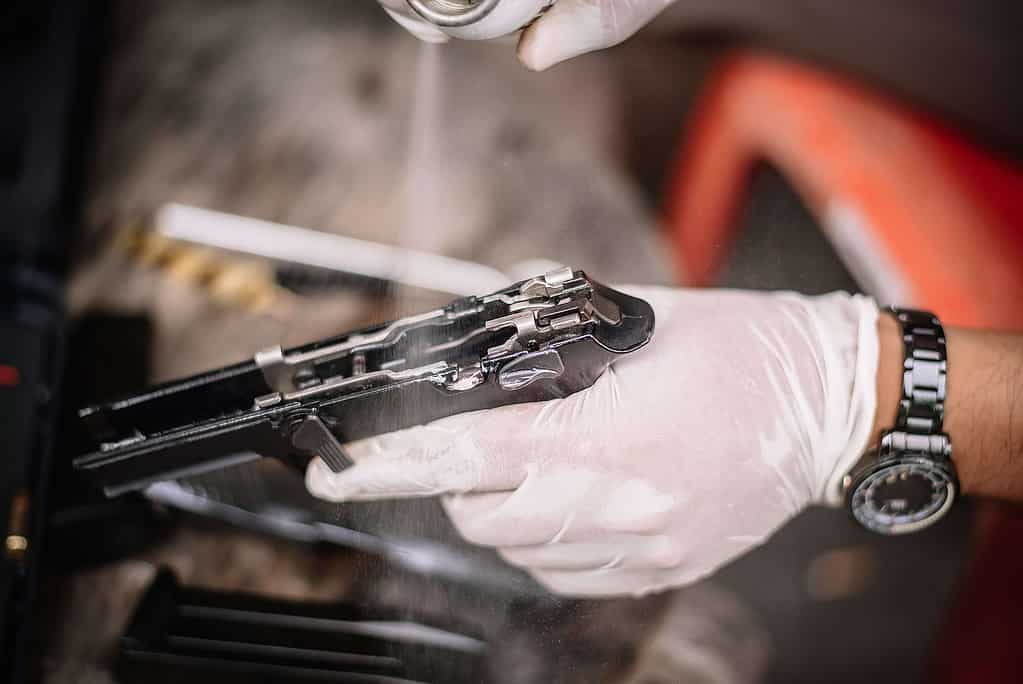Firearm Cleaning Guide: Ensuring Performance & Longevity

Firearm Cleaning and Maintenance: Best Practices for Longevity
While it might seem like a chore, maintaining your firearm is crucial for its performance and lifespan. You’re not just cleaning a gun; you’re ensuring your safety and the reliability of a tool you might one day rely on.
In this guide, you’ll learn the best practices for firearm cleaning and maintenance to ensure its longevity. You’ll discover how to methodically disassemble, clean, and reassemble your firearm, reducing the risk of malfunctions and wear.
We’ll cover the ins and outs of proper lubrication, which materials to use, and how to store your firearm to prevent damage. By following these steps, you’ll keep your gun in prime condition and ready for action whenever you need it.
Key Takeaways
- Safety and preparation are essential before starting the cleaning and maintenance process, including unloading the firearm, checking for ammunition, and storing the firearm responsibly.
- Proper cleaning procedures involve disassembling the firearm, scrubbing the barrel, cleaning the action, and applying lubricant to ensure optimal functionality.
- Inspection routines should be followed regularly to check for wear, damage, and potential issues in different parts of the firearm.
- Regular cleaning, maintenance, and proper storage are crucial for preventing corrosion, ensuring proper functioning, and extending the lifespan of the firearm.
Safety and Preparation

Before you dive into cleaning your firearm, it’s essential to unload it and double-check that the chamber is empty to prevent any accidents. This initial step is non-negotiable in the realm of gun safety and maintenance. Methodically eject any magazine and cycle the action to ensure no rounds remain in the firearm. Peer into the chamber from both the ejection port and the muzzle end, confirming it’s visibly free from ammunition.
Once the firearm is confirmed unloaded, take further precautions to maintain this secure state. If you’re interrupted or need to step away, always recheck the firearm upon your return. This habit helps prevent any mishaps that could arise from forgetfulness or distraction.
When you’re not actively handling your firearm, store it responsibly to prevent unauthorized access. A quality gun safe or locked cabinet is ideal, providing a controlled environment that shields your firearm from humidity, dust, and the prying hands of the untrained or ill-intended. Remember, responsible firearm ownership extends beyond active handling; it encompasses how you store your firearm, ensuring it remains an asset rather than a liability.
Cleaning Procedures

With your firearm securely unloaded and stored, you’re now ready to focus on the actual cleaning process, which will ensure your gun functions reliably and safely. The cleaning process involves a series of precise steps. Begin by disassembling your firearm as the manufacturer recommends. This mightn’t require a complete takedown every time, but regular cleaning should at least include the barrel and action.
Use cleaning tools like a bore brush attached to a cleaning rod to scrub the inside of the barrel. Run the brush through several times, then switch to a patch holder with cleaning patches to remove loosened residue. Apply solvent to the patches for a thorough clean, alternating with dry patches until they come out clean.
Next, clean the action with a smaller brush and solvent. Ensure you reach all nooks where powder residue and debris tend to accumulate. Wipe down all parts with a clean, dry cloth before applying a thin layer of lubricant, which helps prevent rust and ensures smooth operation.
Reassemble your firearm, double-checking each part as you go. Your regular cleaning routine won’t only maintain your gun’s performance but also familiarize you with its mechanics, an invaluable benefit for any responsible gun owner.
Inspection Routines
Every cleaning session should include a thorough inspection, ensuring you catch any signs of wear or potential issues that could affect your firearm’s performance. Begin by disassembling your firearm according to the manufacturer’s instructions, taking care to handle all components with precision. Scrutinize each part for signs of wear, such as cracks, deformation, or unusual marks that may indicate stress or damage. Your inspection routines must be methodical; examine the barrel for obstructions or pitting, check the condition of the firing pin, and ensure that the action operates smoothly.
Remember to look for subtle indicators of potential issues, like irregularities in the trigger pull or inconsistencies in the bolt’s movement. After firing approximately 200 rounds—or at least once a month if the firearm isn’t used regularly—conduct these inspections to preclude residue buildup and corrosion.
Dry firing without ammo is also a critical aspect of your inspection routine. It allows you to understand the firearm’s operation and identify any functional abnormalities without the risk of discharging a round.
By adhering to these meticulous inspection protocols, you’ll maintain the reliability and longevity of your firearm.
Now, let’s shift our focus to the next critical element of maintenance: proper lubrication.
Proper Lubrication

You’ll need to select a top-tier lubricant to ensure the smooth functioning of your firearm’s moving parts. Always use lubricants that are specifically formulated for firearms. These lubricants are designed to withstand the high pressures and temperatures firearms generate, providing reliable performance under various conditions. When applying lubricant, do so sparingly; a few drops are often all that’s needed at each friction point. Over-lubrication can attract dirt and debris, which can lead to malfunctions or damage.
After you’ve applied the lubricant, methodically work the action to distribute it evenly. Then, with a clean cloth, meticulously wipe away any excess to maintain a clean environment within the firearm. This attention to detail not only ensures that the components operate smoothly but also extends the lifespan by reducing wear and tear.
Remember that proper lubrication isn’t just about applying oil; it’s about maintaining optimal functionality and preventing malfunctions. By adhering to these guidelines, you’ll contribute to the longevity and reliability of your firearm, keeping it ready for use whenever you need it.
Storage and Handling
After ensuring your firearm’s lubrication is precise and minimal, it’s crucial to focus on its storage and handling to maintain optimal condition. Store your firearm in a gun safe specifically designed to control humidity levels and prevent rust and corrosion. A controlled environment is key to preventing damage that can occur from exposure to moisture and temperature fluctuations.
When handling your firearm, maintain a disciplined approach. Always ensure it’s unloaded before storing or cleaning, and handle it with clean, dry hands. Regular inspections are also necessary; check for any signs of wear or damage that could compromise safety or functionality.
Here’s a quick reference guide for maintaining ideal storage conditions:
| Factor | Recommendation |
|---|---|
| Humidity | Keep humidity levels between 30-50% |
| Temperature | Store in a cool, dry place |
| Accessibility | Quick access safes for short term, dedicated gun safes for long term |
Frequently Asked Questions
What Is the Proper Care and Maintenance of a Firearm?
To properly care for your firearm, you’ll need to regularly clean, lubricate, and inspect it for any damage, and always store it in a dry, secure place to ensure its safety and functionality.
What Is the Most Important Thing to Remember When Cleaning Guns?
When cleaning your gun, the most crucial aspect to remember is to always ensure it’s unloaded before you begin to prevent any accidental discharge and potential injury. Safety must be your priority.
How Often Should a Firearm Be Cleaned to Keep?
You should clean your firearm after each use to prevent buildup and maintain performance. Regular maintenance ensures reliability and safety, so check and clean your gun even during extended periods of disuse.
What Is Recommended When Cleaning a Firearm?
When cleaning your firearm, always ensure it’s unloaded, use specific tools and solvents, and meticulously scrub each part. Regular, thorough cleanings will keep it functioning properly and prevent dangerous malfunctions.
Conclusion
You’ve mastered the essentials. Always prioritize safety, methodically clean every component, and inspect for wear.
Lubricate judiciously to ensure smooth operation.
Store your firearm securely, safeguarding against the elements.
With these best practices, your gun’s longevity is in your capable hands. Remember, consistent care is the hallmark of a responsible owner and the secret to a reliable firearm.
Keep up the discipline, and your weapon will serve you well for years to come.
